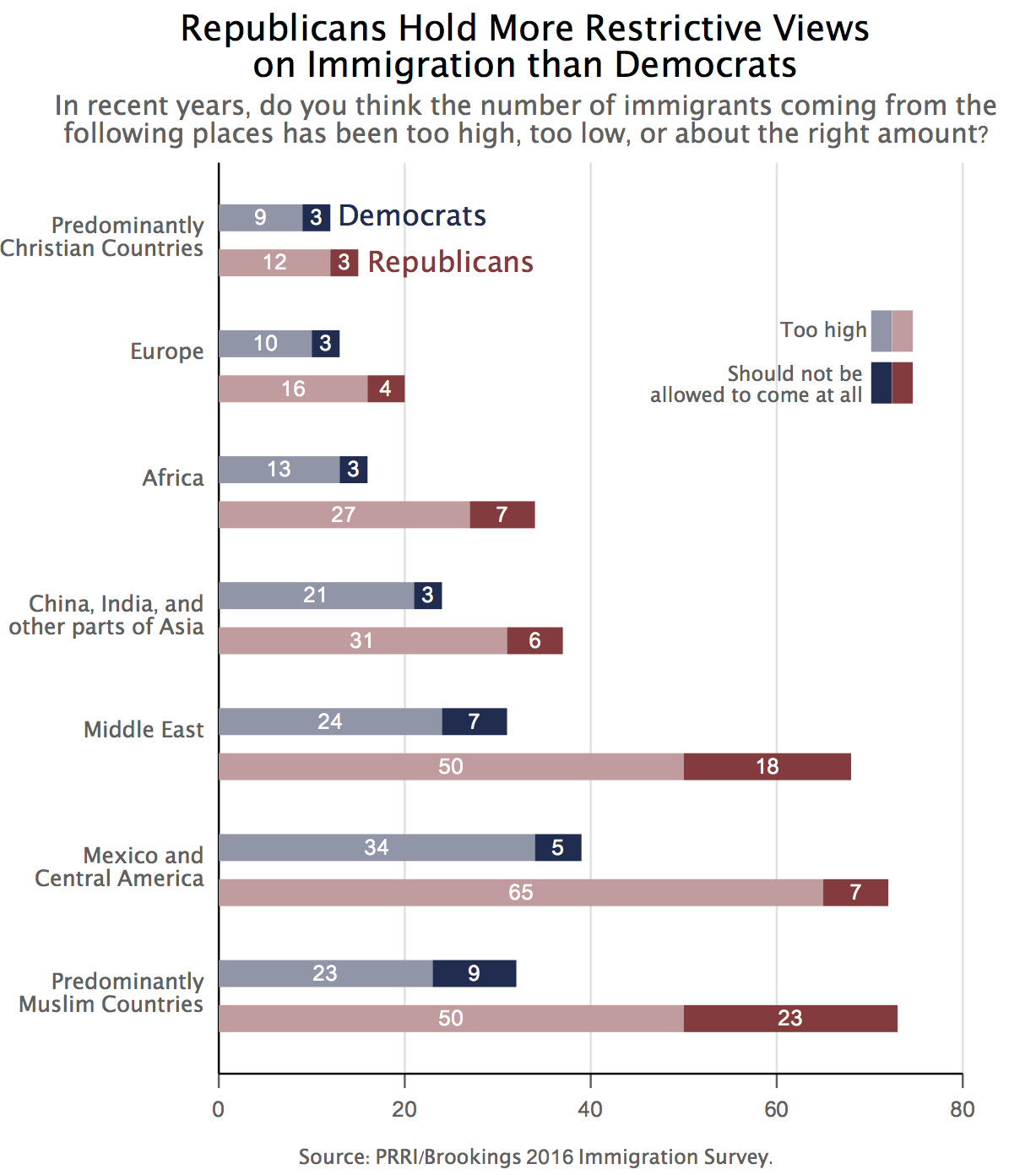Over the last two years, few topics have been as central to the national political debate as immigrants and their role in American society. They dominated much of the 2016 election cycle and have been a focal point of President Trump’s administration over the last year.
Although broad public support for immigration reform has been consistent throughout this debate, views of immigrants vary widely among the public. A recent PRRI/Brookings survey found that restrictive views on immigration—i.e., viewing a group’s immigration rate as too high, or believing that this group should not be allowed to come to the United States at all—vary widely by the immigrant’s country of origin. Americans’ views are least restrictive with respect to immigration from predominantly Christian (14 percent), European (16 percent), African (24 percent), and Asian (29 percent) countries. In contrast, they are more opposed to immigration coming from the Middle East (45 percent), predominantly Muslim countries (49 percent), and Mexico and Central America (53 percent).
 While Republicans and Democrats have similarly restrictive views on immigration from predominantly Christian (15 percent vs. 12 percent, respectively) and European (20 percent vs. 13 percent) countries, they have markedly different views when it comes to other regions. Republicans are far more likely than Democrats to say there are too many immigrants from Africa (34 percent vs. 16 percent), Asia (37 percent vs. 24 percent), the Middle East (68 percent vs. 31 percent), Mexico and Central America (72 percent vs. 39 percent), and predominantly Muslim countries (73 percent vs. 32 percent), or that immigrants from these countries should not be permitted to come to the U.S. at all.
While Republicans and Democrats have similarly restrictive views on immigration from predominantly Christian (15 percent vs. 12 percent, respectively) and European (20 percent vs. 13 percent) countries, they have markedly different views when it comes to other regions. Republicans are far more likely than Democrats to say there are too many immigrants from Africa (34 percent vs. 16 percent), Asia (37 percent vs. 24 percent), the Middle East (68 percent vs. 31 percent), Mexico and Central America (72 percent vs. 39 percent), and predominantly Muslim countries (73 percent vs. 32 percent), or that immigrants from these countries should not be permitted to come to the U.S. at all.